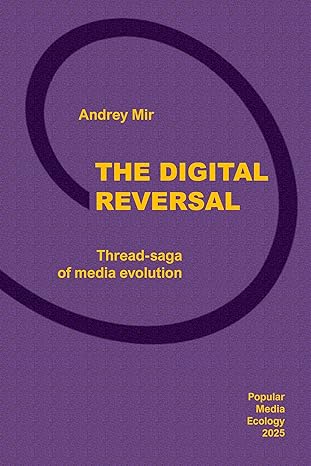The future of the book is the blurb, said Marshall McLuhan. As the future arrives, this book is written in tweets—1,295 of them. Gathered in thread-chapters, they explore and explain what media evolution does to us.
Cars help people get around faster. But when their use hits certain limits, their effect of speed and mobility reverses into traffic jams. And so it is with any medium: when it reaches its extremes or limits, it reverses its effect into the opposite.
This is what we face now. Digital media have sped up human interaction with the world to its limit—instantaneity. No wonder everything is now reversing into its opposite, merging into one global, cataclysmic Digital Reversal.
The abundance of signals reverses into noise. The abundance of facts reverses into fakes. Free access to self-expression leads to abuse by trolls and bad actors and reverses into censorship. The revolt of the public reverses into anarcho-tyranny.
Text reverses into texting, and texting reverses print literacy into digital orality. Abstraction reverses into anecdotal evidence. Feelings reverse into intensities. Boosted by the overload of empathy, identity reverses into credentials.
Journalism reverses into postjournalism. The overload of news reverses into news avoidance. Reading books reverses into asking the search box. Knowledge reverses into knowing. Academia flips into activism. Objective truth reverses into crowdsourced importance.
Everything is media effects. In the digital era, the study of media effects is the study of reversals. Reversals are everywhere. Like verses in a saga, 1,295 tweets across 248 pages cover the development of media from orality to literacy and now in reverse—to digital orality.


